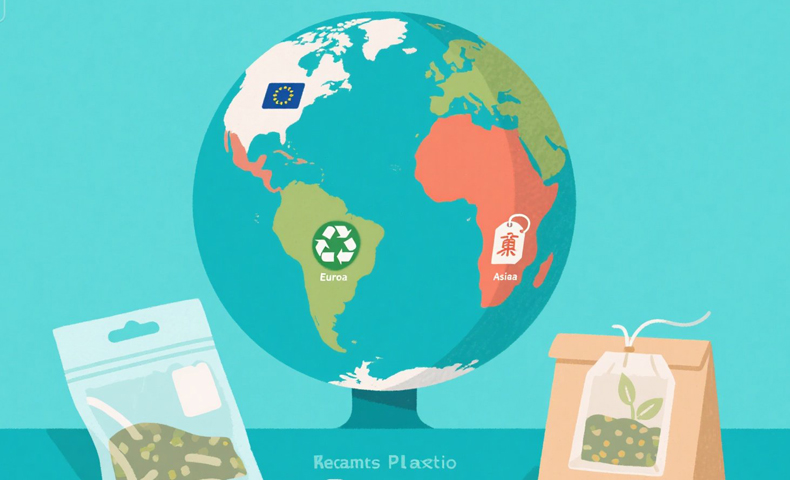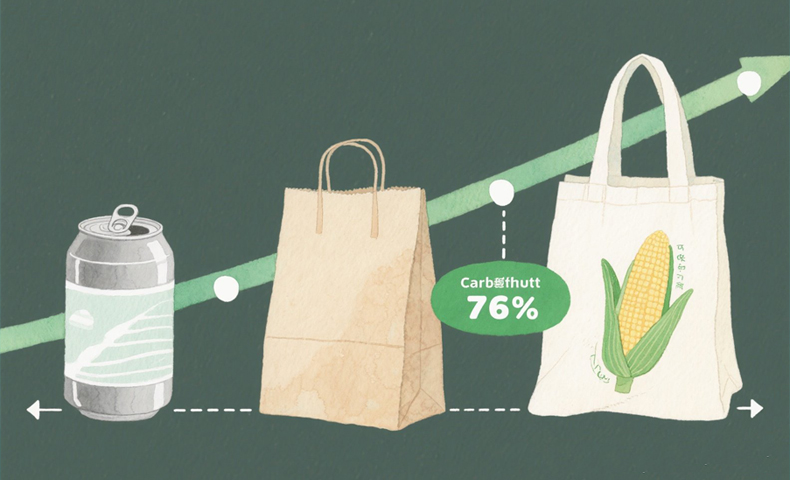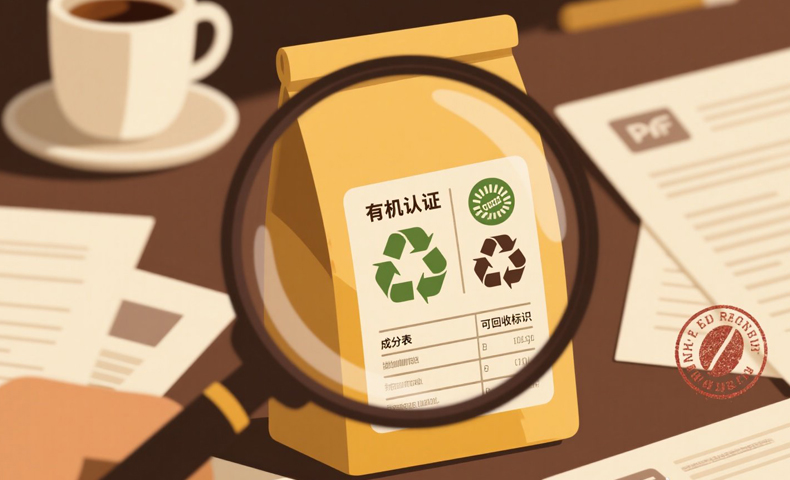How Coffee Brands Should Adapt to New Packaging Regulations
In recent years, coffee packaging regulations have evolved significantly. As governments and environmental organizations push for sustainability, brands face the challenge of adapting to new rules. But why should coffee brands care? Non-compliance can mean hefty fines and loss of consumer trust. That’s why it’s critical for coffee brands to understand and respond to these changes.
So how can coffee brands adapt to new packaging regulations? It’s crucial for businesses to stay up-to-date on these changes, revise their packaging materials, and meet the updated legal requirements. By doing so, they ensure continued market presence, protect their reputation, and even gain the trust of eco-conscious consumers.
Understanding the packaging regulations and how they impact your brand is just the beginning. Let’s dive deeper into how coffee brands can successfully navigate these changes.
1. What Are the Latest Changes in Coffee Packaging Regulations?
The coffee industry, like many others, is adjusting to a growing focus on sustainability. Governments around the world are implementing stricter guidelines for packaging materials, waste management, and labeling. These regulations aim to reduce environmental impact while ensuring that packaging is safe and informative for consumers.
As a coffee brand, it’s important to be proactive and prepared for these changes. Failure to comply can result in penalties, product recalls, and a damaged reputation.

Global vs. Local Packaging Regulations
● Differences in packaging regulations across regions
● How global coffee brands should adapt to varying standards
Key Areas of Focus for Coffee Brands
● Sustainable materials and packaging waste
● The shift towards biodegradable and recyclable options
| Regulatory Focus | Description |
|---|---|
| Sustainability | Regulations now require brands to use sustainable, recyclable materials. |
| Labeling Requirements | New standards demand transparency in ingredient sourcing and nutritional information. |
| Packaging Waste | Increasing pressure to reduce single-use plastics and minimize waste. |
2. Why Are Packaging Regulations Changing for Coffee Brands?
The primary driver behind packaging regulations is environmental concerns. Overuse of plastic and other non-recyclable materials has led to an environmental crisis. Governments and environmental groups are responding by tightening regulations. For coffee brands, this means more responsibility to adopt sustainable practices.
Additionally, consumer expectations have shifted. Today’s consumers are more aware of environmental issues and demand that the brands they support reflect their values. By adapting, coffee brands not only comply with regulations but also strengthen their relationship with their customer base.
Environmental Concerns Driving Change
● Reducing plastic use to protect oceans and wildlife
● The global call for increased recycling and eco-friendly packaging
Consumer Health and Safety Regulations
● New rules on labeling to ensure clear communication of ingredients
● Requirements for non-toxic, food-safe materials
| Driver | Description |
|---|---|
| Environmental Impact | Regulations focus on minimizing waste and using sustainable materials. |
| Consumer Demands | Consumers increasingly favor brands with eco-friendly practices. |
| Legal Requirements | Governments worldwide are imposing strict laws to limit packaging waste. |
3. How Do New Packaging Regulations Impact Coffee Brands?
Adapting to new packaging regulations may present operational challenges for coffee brands. The cost of redesigning packaging, switching to sustainable materials, and implementing new processes can be significant. However, the long-term benefits, such as increased brand loyalty and enhanced reputation, often outweigh these costs.
Brands also need to invest in educating their teams about the new rules and ensure that all packaging designs meet regulatory standards. This investment in compliance will help avoid legal risks and ensure that products remain on store shelves.

Operational Changes Coffee Brands Will Face
● Redesigning product packaging to comply with new materials standards
● Managing supply chain changes and sourcing sustainable materials
Costs Associated with Adapting to New Regulations
● The upfront cost of sourcing new materials and redesigning packaging
● Potential delays in production and distribution due to redesigns
| Impact | Description |
|---|---|
| Operational Adjustments | Brands will need to modify production lines and packaging equipment. |
| Cost Considerations | Sustainable packaging may cost more initially but can save in the long run. |
| Supply Chain Changes | Finding reliable suppliers for new, sustainable materials can pose challenges. |
4. What Are the Key Requirements in the New Coffee Packaging Regulations?
The new packaging regulations focus on materials, labeling, and sustainability. Coffee brands need to ensure that their packaging complies with the updated legal requirements for environmental impact, safety, and consumer transparency.
Key requirements often include using recyclable materials, clearly displaying ingredients and nutritional information, and ensuring packaging waste is reduced. This might involve using biodegradable plastics, cardboard, or other eco-friendly alternatives.
Labeling Requirements
● Clear, transparent labeling with ingredient and nutritional information
● Proper identification of recyclable and compostable materials
Material Specifications for Packaging
● Recyclable materials like paper, glass, and biodegradable plastics
● Bans on harmful chemicals used in packaging
| Requirement | Description |
|---|---|
| Material Compliance | Use of recyclable, biodegradable, or compostable materials is now mandatory. |
| Labeling Transparency | Labels must disclose all ingredients and indicate whether packaging is recyclable. |
| Safety Standards | Packaging must meet new food safety standards for consumer protection. |
5. How Can Coffee Brands Ensure Compliance with Packaging Regulations?
Ensuring compliance with new packaging regulations requires vigilance, proactive strategies, and collaboration with experts in the field. Working closely with legal teams and regulatory consultants can help navigate the complexities of compliance.
Coffee brands must also prioritize continuous training for their teams and keep updated on changing regulations. This will ensure that the brand remains compliant, minimizing the risk of legal issues or penalties.
Working with Legal and Regulatory Experts
● Engage with legal experts to interpret new regulations
● Stay informed through industry associations and government updates

Updating Packaging Processes and Designs
● Invest in research to find sustainable packaging options
● Redesign packaging with clear, transparent labeling
| Strategy | Description |
|---|---|
| Legal Consultation | Seek advice from legal experts to stay compliant. |
| Staff Training | Regularly train staff to understand the evolving packaging rules. |
| Supplier Partnerships | Partner with eco-friendly suppliers who meet regulatory standards. |
Conclusion
Adapting to new coffee packaging regulations is both a challenge and an opportunity. By complying with these changes, coffee brands can not only avoid legal pitfalls but also differentiate themselves as leaders in sustainability. The key is to stay proactive, invest in sustainable practices, and turn compliance into a marketing advantage.
FAQ Section
- Q1: What are the new coffee packaging regulations?
The new regulations focus on sustainable materials, labeling transparency, and waste reduction, aiming to minimize environmental impact while ensuring product safety and clarity for consumers. - Q2: How do packaging regulations impact coffee brands?
Packaging regulations require brands to adjust their materials, labeling, and supply chains to comply with new sustainability standards, which may lead to higher costs but long-term benefits. - Q3: Why is sustainability important in coffee packaging?
Sustainability is crucial as consumers are increasingly demanding eco-friendly products. Coffee brands that prioritize sustainable packaging not only comply with regulations but also build trust with their environmentally conscious audience. - Q4: How can coffee brands reduce packaging waste?
Coffee brands can reduce waste by using recyclable or biodegradable materials, optimizing packaging sizes to minimize excess, and working with suppliers who prioritize sustainability. - Q5: What happens if coffee brands fail to comply with packaging regulations?
Non-compliance can result in fines, legal action, product recalls, and damage to a brand’s reputation, all of which can negatively impact sales and consumer trust.
